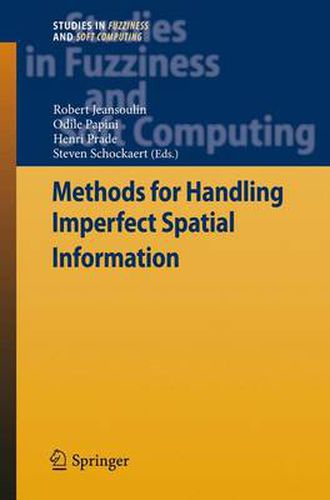Readings Newsletter
Become a Readings Member to make your shopping experience even easier.
Sign in or sign up for free!
You’re not far away from qualifying for FREE standard shipping within Australia
You’ve qualified for FREE standard shipping within Australia
The cart is loading…






Spatial information is pervaded by uncertainty. Indeed, geographical data is often obtained by an imperfect interpretation of remote sensing images, while people attach ill-defined or ambiguous labels to places and their properties. As another example, medical images are often the result of measurements by imprecise sensors (e.g. MRI scans). Moreover, by processing spatial information in real-world applications, additional uncertainty is introduced, e.g. due to the use of interpolation/extrapolation techniques or to conflicts that are detected in an information fusion step.
To the best of our knowledge, this book presents the first overview of spatial uncertainty which goes beyond the setting of geographical information systems. Uncertainty issues are especially addressed from a representation and reasoning point of view. In particular, the book consists of 14 chapters, which are clustered around three central topics. The first of these topics is about the uncertainty in meaning of linguistic descriptions of spatial scenes. Second, the issue of reasoning about spatial relations and dealing with inconsistency in information merging is studied. Finally, interpolation and prediction of spatial phenomena are investigated, both at the methodological level and from an application-oriented perspective. The concept of uncertainty by itself is understood in a broad sense, including both quantitative and more qualitative approaches, dealing with variability, epistemic uncertainty, as well as with vagueness of terms.
$9.00 standard shipping within Australia
FREE standard shipping within Australia for orders over $100.00
Express & International shipping calculated at checkout
Spatial information is pervaded by uncertainty. Indeed, geographical data is often obtained by an imperfect interpretation of remote sensing images, while people attach ill-defined or ambiguous labels to places and their properties. As another example, medical images are often the result of measurements by imprecise sensors (e.g. MRI scans). Moreover, by processing spatial information in real-world applications, additional uncertainty is introduced, e.g. due to the use of interpolation/extrapolation techniques or to conflicts that are detected in an information fusion step.
To the best of our knowledge, this book presents the first overview of spatial uncertainty which goes beyond the setting of geographical information systems. Uncertainty issues are especially addressed from a representation and reasoning point of view. In particular, the book consists of 14 chapters, which are clustered around three central topics. The first of these topics is about the uncertainty in meaning of linguistic descriptions of spatial scenes. Second, the issue of reasoning about spatial relations and dealing with inconsistency in information merging is studied. Finally, interpolation and prediction of spatial phenomena are investigated, both at the methodological level and from an application-oriented perspective. The concept of uncertainty by itself is understood in a broad sense, including both quantitative and more qualitative approaches, dealing with variability, epistemic uncertainty, as well as with vagueness of terms.